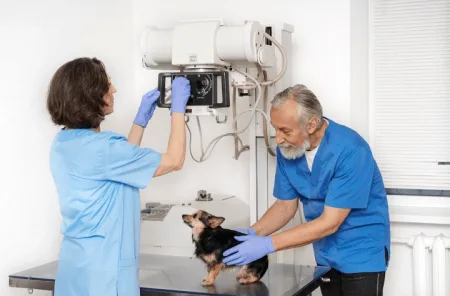Inductively Coupled Plasma Mass Spectrometry, or ICP-MS for short, is a powerful analytical technique that has become a cornerstone in various fields, including environmental science, chemistry, geology, and life sciences.
In this comprehensive guide, we will break down the fundamentals of ICP-MS in a straightforward and reader-friendly manner, allowing you to grasp the key principles, applications, and benefits of this analytical method.
What is ICP-MS?
ICP-MS is a technique used for elemental analysis, which helps us determine the concentrations of individual elements in a sample. Unlike other techniques, such as atomic absorption spectroscopy or flame atomic emission spectroscopy, ICP-MS offers several advantages:
- High Sensitivity: ICP-MS can detect elements at extremely low concentrations, often down to parts per trillion (ppt) or even lower.
- Wide Element Range: It can analyse a broad range of elements simultaneously, from the lightest, like hydrogen, to the heaviest, such as uranium.
- Isotopic Resolution: ICP-MS can distinguish between isotopes of the same element, allowing for precise analysis in fields like geochemistry and nuclear science.
- Quantitative Accuracy: With the right calibration and sample preparation, ICP-MS provides accurate quantitative data.
How Does ICP-MS Work?
ICP-MS combines two powerful techniques: Inductively Coupled Plasma (ICP) and Mass Spectrometry (MS). Let’s delve into each of these components.
Inductively Coupled Plasma (ICP)
ICP is a high-temperature ionisation source. It’s created by injecting an inert gas (usually argon) into a radiofrequency (RF) induction coil, which generates a high-energy electromagnetic field. This field ionises the argon gas, turning it into a plasma. The plasma reaches temperatures as high as 10,000 degrees Celsius, atomising the sample and turning it into a superheated cloud of ions.
Mass Spectrometry (MS)
The ions generated in the ICP are then introduced into the mass spectrometer. A mass spectrometer is an instrument that sorts ions based on their mass-to-charge ratio (m/z). It does this by subjecting the ions to magnetic and electric fields. The extent to which these fields deflect the ions depends on their mass and charge, allowing the mass spectrometer to separate them.
The Key Components of ICP-MS
Several essential components work together to perform ICP-MS analysis:
- Sample Introduction System: This part of the instrument is responsible for introducing the sample into the ICP. Typically, this is done through a nebuliser, which converts the sample into a fine aerosol for efficient introduction.
- Plasma Torch: The plasma torch is the heart of the ICP. It creates the high-temperature plasma needed to atomise the sample.
- Mass Spectrometer: As discussed earlier, the mass spectrometer sorts and quantifies the ions generated by the plasma.
- Detector: The detector records the ions’ signal and converts it into data that can be analysed and interpreted.
Analysing Your Sample with ICP-MS
Now that we understand the basic components, let’s see how an actual ICP-MS analysis takes place:
- Sample Preparation: Before analysis, samples need to be properly prepared. This often involves digestion or dissolution, especially for solid samples. The goal is to ensure that the elements of interest are in a form suitable for introduction into the ICP.
- Sample Introduction: The prepared sample is introduced into the instrument through the nebuliser, which converts it into a fine aerosol. The aerosol is then transported into the high-temperature plasma.
- Ionisation: The high temperatures of the plasma break down the sample into individual atoms. Some of these atoms become ions by losing or gaining electrons.
- Mass Separation: The ions produced in the plasma are then sent into the mass spectrometer. Inside the mass spectrometer, they are separated based on their mass-to-charge ratio. Each ion’s intensity is measured, providing information on the concentration of each element.
- Data Analysis: The detector records the ion intensities, which are then processed and analysed to determine the sample’s element concentrations.
Applications of ICP-MS
ICP-MS finds applications in a wide range of fields. Some of the most common areas where this technique is invaluable include:
Environmental Analysis
ICP-MS widely monitors environmental contaminants such as heavy metals (e.g., lead, cadmium, mercury) in air, water, and soil. It helps assess pollution levels and ensures compliance with environmental regulations.
Pharmaceutical and Biochemical Analysis
In pharmaceutical and biochemical research, ICP-MS plays a crucial role in drug development, ensuring the purity and safety of pharmaceutical products. It is also used in analysing trace elements in biological samples.
Geological and Mining Exploration
Geologists use ICP-MS to analyse rock and mineral samples for elements that provide insights into geological processes. It is essential in mineral exploration and resource assessment.
Food and Beverage Testing
ICP-MS detects and quantifies trace elements and contaminants in food and beverages, ensuring consumer safety and quality control.
Forensic Science
Forensic laboratories use ICP-MS to analyse evidence such as hair, tissue, and bodily fluids for trace elements, aiding criminal investigations.
Tips for Successful ICP-MS Analysis
- Sample Preparation is Key: Proper sample preparation is crucial to ensure accurate and reliable results. Pay close attention to digestion, dilution, and matrix effects.
- Calibration: Always perform a thorough calibration using certified reference materials. This step is essential for quantifying your results accurately.
- Quality Control: Implement quality control measures, including blank samples and duplicate analyses, to monitor the accuracy and precision of your research.
- Cleanliness: Maintain a clean laboratory environment to avoid contamination, which can skew results.
- Instrument Maintenance: Regularly calibrate your ICP-MS instrument to ensure optimal performance.
Challenges and Limitations
While ICP-MS is a powerful technique, it does have some limitations and challenges to be aware of:
Cost
ICP-MS instruments can be expensive to purchase, operate, and maintain, making them less accessible for some laboratories.
Complexity
The technique requires a certain level of expertise to operate and interpret results correctly.
Interferences
Some elements may produce spectral interferences, where their signals overlap with those of other elements. These interferences must be carefully addressed.
Sample Matrix Effects
The sample matrix can influence the accuracy of results. Careful sample preparation and calibration are essential to mitigate matrix effects.
Conclusion
Coupled Plasma Mass Spectrometry is a versatile and powerful analytical technique that has revolutionised elemental analysis in various fields. Its ability to detect elements at low concentrations, analyse a wide range of elements simultaneously, and provide accurate quantitative data makes it an invaluable tool for researchers and scientists.
Understanding the fundamentals of ICP-MS, from how it works to its applications and best practices, is essential for obtaining reliable results. Whether you are studying environmental contaminants, developing pharmaceuticals, or exploring geological formations



